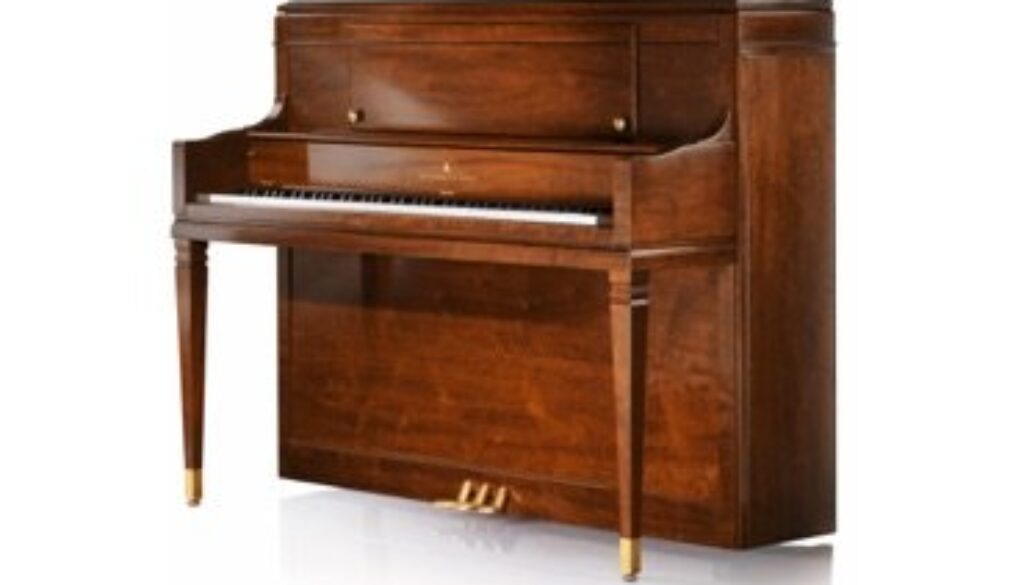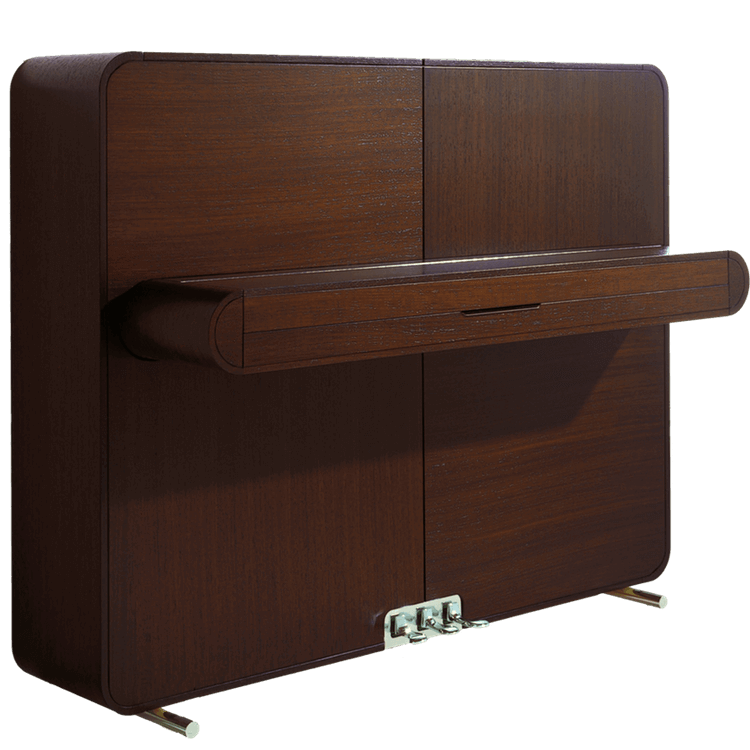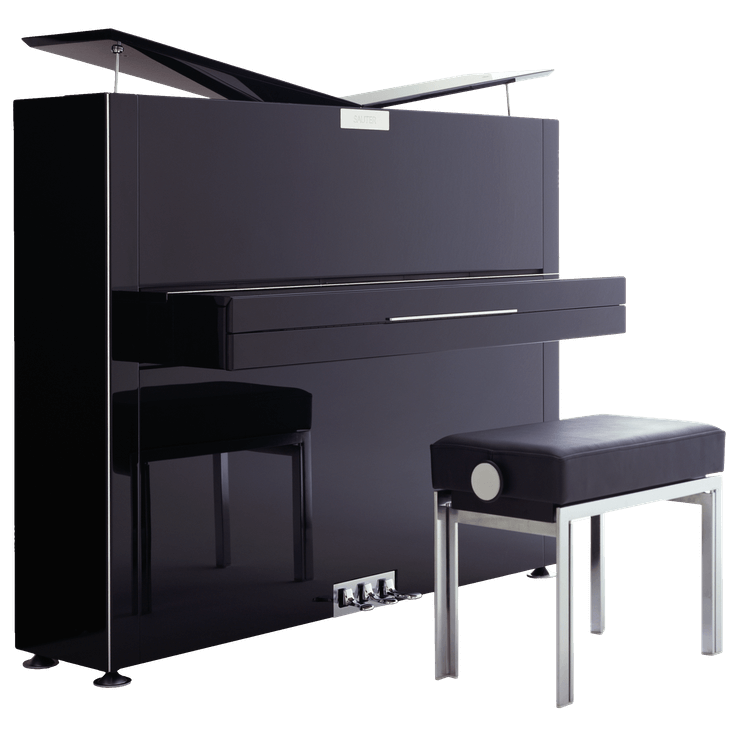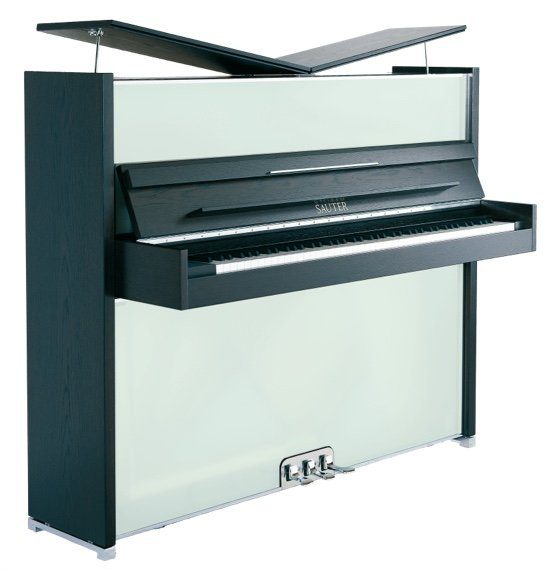UPRIGHT PIANOS – THE WHOLE STORY
Upright pianos have been very popular for decades, but were once highly disparaged by critics who prefer the performance of grand pianos. It no longer holds true, however, as in the latest piano renaissance, uprights have come into their own. But it was never a fair comparison since the instruments are manufactured for different uses, and to serve the needs of different pianists.
Beginning in 1805, uprights found their place in the piano market. They were sometimes referred to as “cottage” pianos, in those days, because they took up less floor space. Homes that could afford pianos then were usually large, with parlors suited to extravagant grand pianos.
But people who weren’t rich and didn’t have large Victorian houses wanted to play pianos. They had children who wanted to learn piano. Smart manufacturers lowered piano production costs by introducing uprights which propelled the vertical piano into many homes by the end of the 1800’s. By the beginning of the 1900’s, the upright piano became the space-saving and money-saving alternative to the grand piano.
What Defines An Upright Piano?
When most people think of pianos, they picture a three-legged behemoth with a lid that opens to expose intricate machinations within including a flat soundboard with strings and hammers. The baby grand, the parlor grand, the concert grand comes to mind.
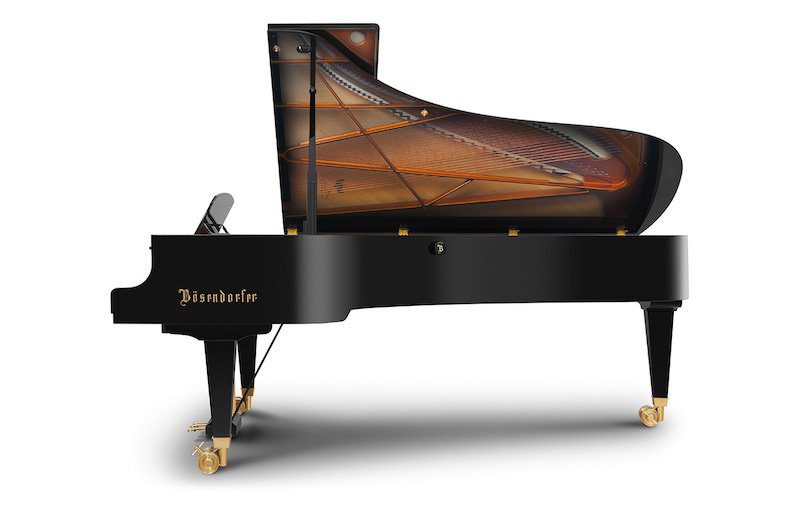
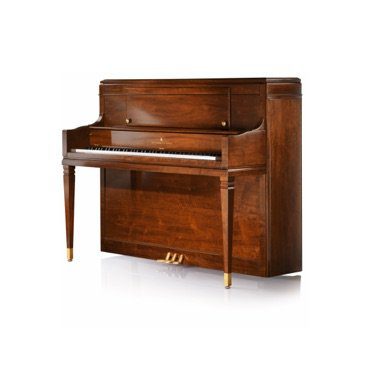
The upright, however, is more of a square box, sitting “upright” with a keyboard jutting from the box. Designs differ. Sometimes the keyboard is supported by legs (as below) and other times not. As you can see, they are wholly different animals in basic design, and serve wholly different purposes
The “action” inside a piano produces the music. When a piano key is pressed down, its tail lifts a mechanism that throws a hammer against the strings for that key’s note. Simultaneously a damper (a small block of wood with felt affixed) is raised from these strings, allowing them to vibrate more freely. There are more complex mechanisms at work in the action, but too technical to describe in one article.
In a grand piano, the action of the hammer and damper design relies on gravity to complete each note. The action of the upright differs because it returns to a resting position by means of springs rather than by gravity alone, as in a grand. The springs, in part, account for the characteristic key touch of uprights, which is distinctly different from grands. The chief advantages of upright pianos lie in their modest price and compactness.
The soundboard and plate of the strings of an upright piano run vertically, perpendicular to the keyboard, from 36” to 60”, thus taking up less floor space than the horizontal grand piano.
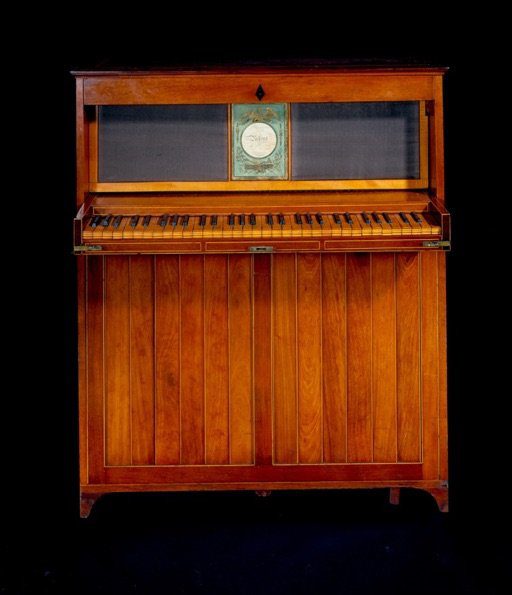
The majority of upright pianos now have strings running upward from the bottom of the case, near the floor. An interesting historical note is that this design is owed to an Englishman, John Isaac Hawkins, who moved to America and was an important manufacturer in Philadelphia. In 1801 he patented this small upright piano with a folding keyboard. One sits in the Smithsonian today.
Hawkins’ upright action had felt hammers (originally leather), double-strings, 2 pedals: wood frame with iron bars behind the soundboard, straight-strung, and a mahogany veneer case with metal carrying handles. An extraordinarily beautiful little piano, with lines clean enough to be considered contemporary to 21st Century tastes.
Before Hawkins, the strings did not run from the bottom of the case, but started upward from near the level of the keys; these instruments were necessarily much taller and necessitated various decorative shapes to accommodate the actions. Some of the historically famous are the lyre-shaped pyramid model (Pyramidenflügel; 1745) of the Saxon organ-builder Ernst Christian Friderici, with both sides sloping upward to the flat top.
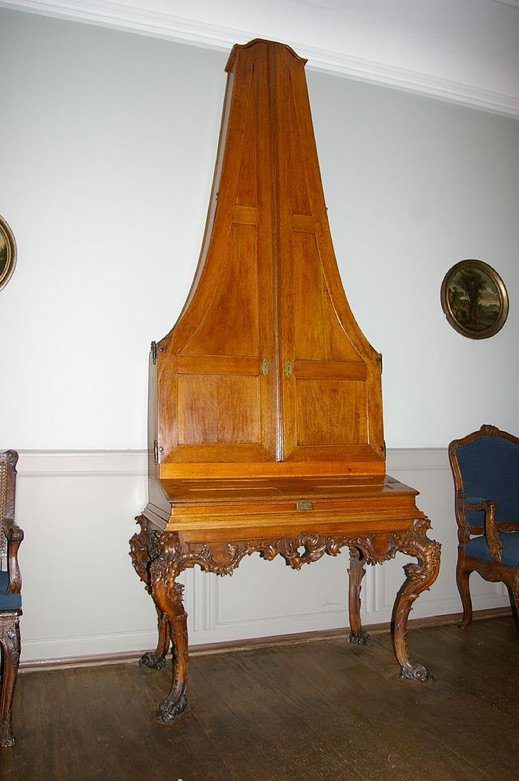
Another curiosity was the giraffe style design ( Giraffenflügel; 1804) of Martin Seuffert of Vienna, with one side straight and one bent, as on a grand piano.
So the upright piano evolved in shape and in action, over the years and has been in demand for decades as the choice for economy budgets and small music rooms, schools, studios, teachers’ rooms, and homes and public venues too small to house a grand piano.
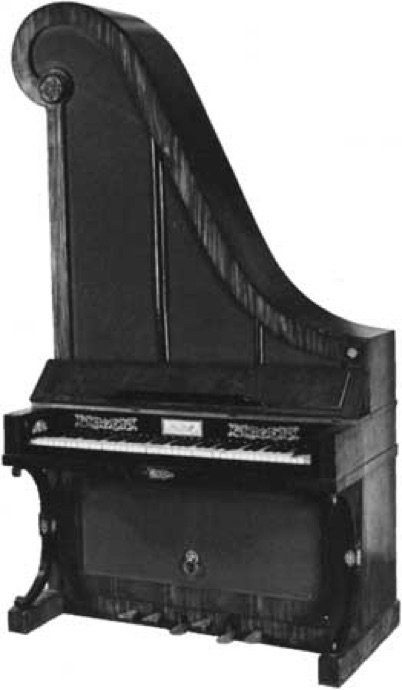
Upright Piano Dimensions
Dimensions for an upright piano are important for measuring the space where the piano needs to sit, and don’t forget to allow space in front of the piano for a stool or bench.
The standard width of an upright piano is about 5′ and the depth is between 2 – 2½’. The total floor space allowance should be about 5′ wide by 5′ deep, including bench space. The height of the piano makes no difference in the floor space needed but it makes a major difference in the quality of sound the piano produces.
Upright pianos are made in various heights; the shortest are called spinets or consoles, and these are generally considered to have an inferior tone resulting from the shortness of their strings and their smaller soundboards. The height of a vertical piano is measured from the floor to the top of the piano.
Spinets are the smallest (approx. 38” tall);
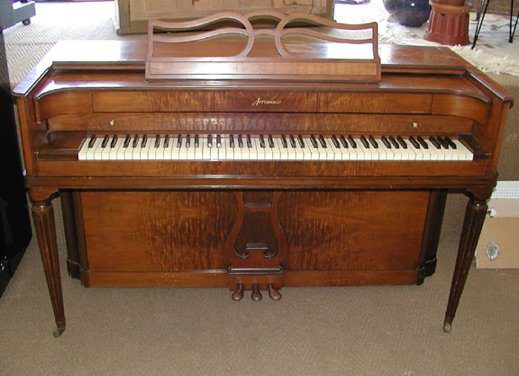
The spinet piano is the smallest of the small upright pianos. The spinet piano has a dropped action. In appearance the spinet and console pianos are very similar. Some technicians charge more to work on spinet pianos because they are more difficult to service due to the action placement. Action parts are more difficult to get to and parts are quite fragile.
Consoles, slightly taller than spinets (up to 43”)
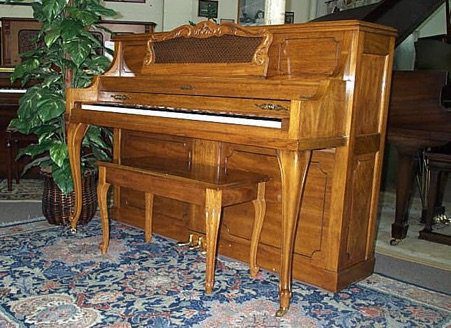
The console is a popular vertical piano among an upright piano for sale. The action of a console piano sits directly on top of the keys and as with all vertical pianos the hammers sit in an upright position. Once the hammer strikes the string and the key is released a spring pulls the hammer back to its original position, ready to strike again. A vertical piano’s action is somewhat slower than the action of a grand piano. Read more about console vs spinet pianos.
Studio, taller still, up to 48” are often used in schools and music studios
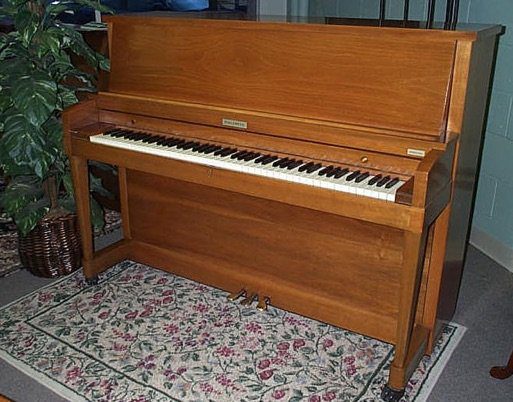
The additional height of the studio piano makes for longer strings and thus gives a richer tonal quality comparable to some grand pianos. The location and feel of the action is also different in a studio piano. Many of the newer studio pianos mimic the touch and sound of a grand piano. Piano manufacturers continue to improve and enhance designs on both verticals and grands in some amazing ways.
Uprights, (50” to 60” tall, originally “the Parlor” piano).
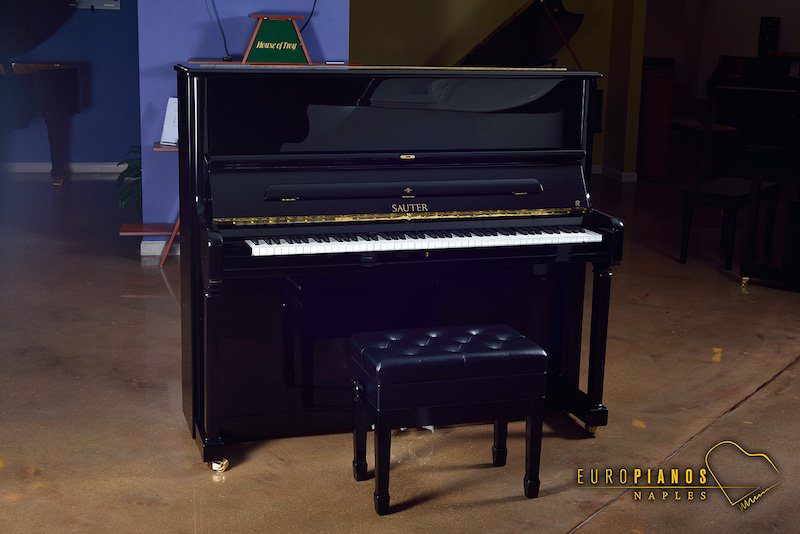
The tallest of the vertical pianos is the upright. Today this term is usually used to refer to any large upright piano (as opposed to a grand piano.) But it is also what they called the antique upright pianos made in America in the 1920 – 1940’s. If properly maintained and treated like the fine antiques they are, these old pianos are some of the most esthetically beautiful and durable instruments ever made. If not properly maintained, an antique piano has no value as a musical instrument and is merely a large piece of furniture. A used upright piano.
Upright Piano Weight
One of the toughest things about owning a piano is its size and weight when it comes time to move it to a new location. A vertical piano, depending on which model, from a spinet to a large upright, can weigh anywhere from 250 lbs. to 500 lbs. This is an important factor to know when you are choosing movers. And you do not entrust any kind of piano to household movers! It must be said that professional piano movers are worth their prices inasmuch as they will insure that your valuable instrument is handled the way it needs to be. All that complex action within the case is delicate and can be easily damaged if movers are not trained for professional moving. Your local mover will assure you they can move your piano, wanting your business, but as experts in the field, we encourage you to hire piano professionals. This is our favorite photo of how bad it can get without all the knowledge of weight, straps, balance, and care that’s needed.

Upright Piano Weight
There are well preserved and/or restored upright antiques to be found and there is a market for them. But a buyer needs to be careful and know pianos or reputable dealers before making such a purchase. Pianos have a rich history and it is reflected in the designs of world class piano makers from all over the world.
Of course, the finest of these antiques were also the finest of their day, and were in the homes of the wealthy where they could be afforded and well cared for. Made usually in mahogany, walnut or oak, these antiques carry sound better because of the long aging process of their woods which makes them last longer too and such aged wood is not available in new pianos. Their warm tenor, resonant bass, and singing trebles all pay homage to the craftsmanship of 100 years ago. However the copper wound strings and metalwork within today’s pianos are much better than antiques.
Even within antique upright pianos, there are different qualities and categories based on the age and models.
Custom Made Art Case Upright Pianos
Probably highest on the antique list would be the old and exquisite art case pianos which one mostly finds in museums. Interestingly enough, the art case has been revived in recent years in modern pianos, so one doesn’t have to search for them anymore.
In the early days, art cases were designed and customized, one of a kind orders (and still are today) made by famous furniture makers with famous piano makers. Often embellished with mosaics, marquetry, and all manner of artistic flourishes, these pianos were the zenith of wealth.
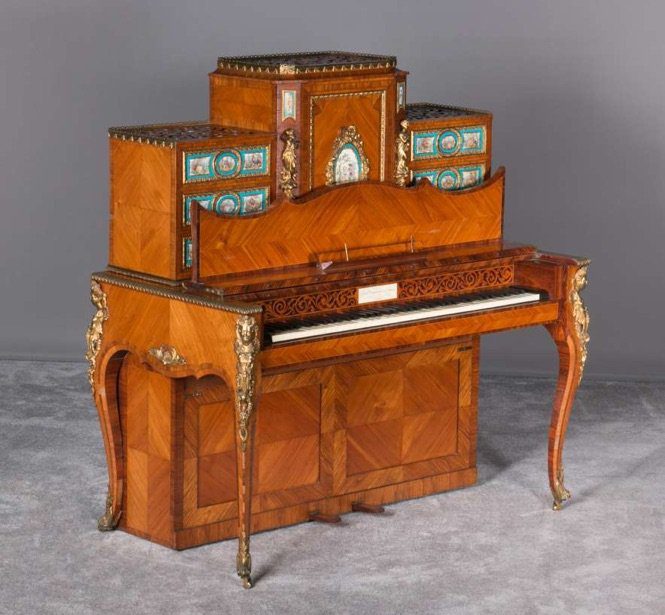
Here’s an example of an 1858 custom made John Broadman & Sons French style upright. It is designed to look like a writing desk, with a finish of Satinwood and Rosewood Marquetry and inlay. Usually antique pianos of this level of luxury are restored with loving care and are a substantial investment.
American Victorian Upright Pianos
After the Civil War, the impact of the Victorian era really took hold in America and extended until the change of the century. Old American money was uncertain and nouveau money was moving in. Victorian art movements like Classicism, Neoclassicism, Romanticism, and Impressionism had its impact on America. When the Victorians were enjoying the rise of literary and poetry works of their famous writers, America was experiencing a simultaneous growth of literary and poetry. Piano design took a decidedly rococo and romantic turn. The surface of the piano cases were carved with garlands and cupids, leaves and blossoms, with ornate swirls and ribbons and intricate fretwork. This 1877 Victorian was the fanciest, largest and most expensive Steinway upright piano in their line.
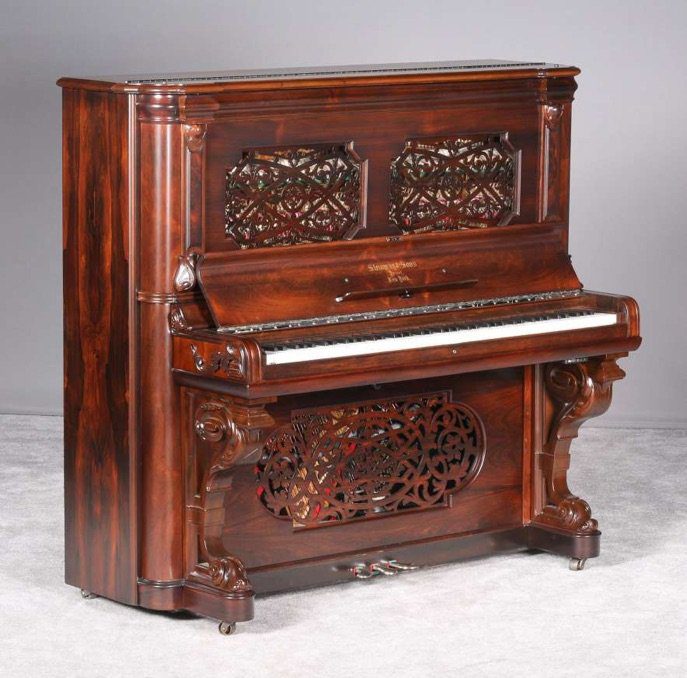
Post Victorian Upright Pianos
After the Victorian era, in the early 1900’s, designs started to gradually settle down but kept the good dark woods and graceful ornamentation, just not so lavish. Pianos were mass produced in more abundance to reach a larger market, so the efficiency of production required some simplification. Still ornate, they were nevertheless more understated than the majority of Victorian instruments. The open filigree panels of the piano above is replaced with carved panels like the piano below, for an example.
This 1909 Wing & Sons upright (and all of the pianos manufactured by this fine company) were sold exclusively by lavish mail-order catalogs and were known for their 5-pedal-attachments that mimicked harp, zither and mandolin.
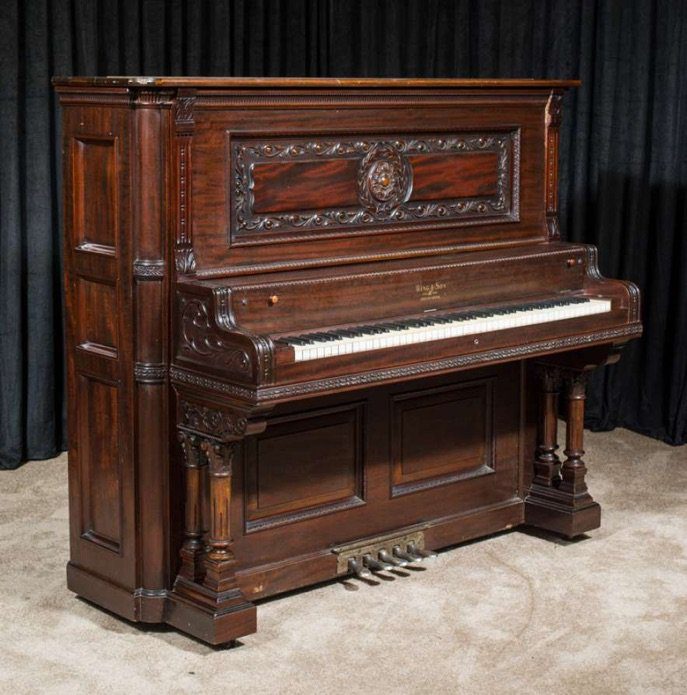
Mass Produced & The New Middle Class Uprights
Gradually as the “middle class” developed, the simple upright piano became affordable to those who were comfortable, if not rich. In the 1920’s, the man on the street could now afford to bring home an Upright for his family. America was growing and economic success allowed more families to put a piano in the parlor. It might not have been as fancy as the earlier models but mass-produced uprights by good piano makers like Steinway changed the game.
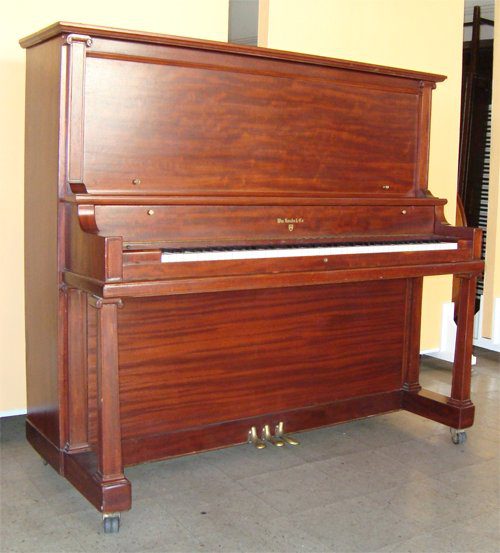
21st Century Upright Pianos
The piano world has had a revolution. Innovative European piano makers have taken time-honored quality and classical styling and transformed historic excellence into modern magnificence with the use of handmade Stradivarian woods, unimagined precision actions, and a variety of decorous piano cases defying art itself. Manufacturers are again hiring furniture designers and prestigious artists to collaborate on customized pianos.
We were knocked out when Sauter hired German designer, Peter Maly to bring the upright piano into the 21st Century. Maly, in an exclusive contract with one of the most respected, quality European piano builders, Sauter (who always makes our ten top lists in every category of pianos.) came out with humdingers. Outstanding style and modernity positively jump out of these models.
This easy on the eyes upright positively oozes with style, its rounded edges and cheerful aspect begs to be played.
The piano seemingly “floats” on stainless steel cylinders and the sophisticated case in available in dark brown wenge wood or glossy black. With Maly ingenuity, the lid opens in “wing-like” formations, with an upholstered chrome and leather bench.
The stark ebony lacquer of this Pure model make it one of our favorites. This design, named “Pure” is an upright based on the principle that “less is more” –as little as possible, as much as necessary. The aim was to be archetypal, reducing the best quality instrument to its essentials, nothing superfluous. And these uprights offer more than visual style and individualism. Remember we told you that pianos are always being improved and new innovations are added over the decades? All of Sauter’s larger verticals use an action, designed and patented by Sauter, that contains an auxiliary jack spring to aid in faster repetition. It’s called the R2 Double Escapement action. The tongue-shaped spring on the jack has been added and keeps it pressed against the butt of the hammer much like gravity does on a grand piano. Repetition is nearly instantaneous, but doesn’t put any “lost motion” in the key. Professionals choose these uprights for performance qualities.
The Pure white upright piano, the sister to the ebony, as well as their Concent white model are also favorites of customers these days. The light airy design coupled with white make fine choices for today’s contemporary settings.
This first cousin of the Pure model, Vitrea has the same aliform winged lid and quality R2 double-repetition action under the hood. But this upright is shockingly unique with cool front panels of frosted matte glass (available in two shades but shown here in green). subtly set into shades of dark or light oak, Reminiscent of fine Venetian art glass, Vitrea catches the light and is a startling pleasure to see in an upright piano, making it unique, surprising and memorable.
Manufacturers Of Upright Pianos
There’s no shortage of upright piano brands – not in the past and not today. Below is a little list of some of the players that were or are very big in the piano world. The industry is rich with history. We didn’t include even a fraction of the companies. These are just samples of brands you probably know as well as Steinway & Sons. And they made or make upright pianos, which is what we’re focused on here.
- Baldwin Upright Pianos – 1890 – 2001, a very famous company.
- Chickering & Sons Upright Pianos – 1823 – 1983 – responsible for cast iron plate in pianos.
- Gulbransen Upright Pianos – 1825 – 1969 – acquired by Story & Clark
- Kawai Upright Pianos – 1930 – Present (also owns Shigeru Kawai brand)
- Kimball Upright Pianos – 1857 – 1996 (once world’s largest piano company)
- Kohler & Campbell Upright Pianos – 1896 (discontinued in North America but sold elsewhere)
- Sauter Upright Pianos – 1819 – Present (some of the best upright pianos and the most beautiful in the business)
- Story & Clark Upright Pianos – 1884 – Present
- Yamaha Upright Pianos – 1887 – Present (also makes electronic pianos)
- Young Chang Upright Pianos – 1956 – Present (also makes electronic upright pianos)
- Wurlitzer Upright Pianos – 1856 – 1988 (acquired by Baldwin)
Upright Piano Prices
To even attempt to estimate prices of upright pianos is foolishness. Like anything else, the price is reflected in the quality, the brand, the demand for, and the performance of the instrument. Pianos sell used and new. (with and without warranties). The truth is you can spend as much on an upright as your budget allows. What’s more important than the price is what you’re getting for the price. That is the reason we write these articles in an effort to educate people about a very complex and exciting industry.
You will find that the finest uprights are now hand made for and with concert quality components. Even professionals’ upright practice pianos need to be performance quality, and with the uprights available today, good brands offer some that are comparable to smaller grands, as well as eye appealing, beautiful vertical instruments that home designers and art collectors can embrace.
We have been blessed with a piano design revolution, and because of this renaissance in upright pianos in recent years, both in visual values and technical innovations, it is helpful to get educated and perhaps get help from an expert. We are available for free consultation on any new pianos you might be seeking. Our years of sales and expertise can save you time and money. We encourage you to read through the blog articles as well, as we endeavor to get as much information down as possible to help you in your efforts.
About Euro Pianos Naples
Euro Pianos Naples is a respected distributor of European luxury musical instruments. The company’s origin dates back to 1965. Euro Pianos represents world renowned brands such as Sauter, and it has recently become a manufacturer of its own acrylic instrument – The Aire. Apart from being a successful retailer, consultant, and entrepreneur organization, Euro Pianos is actively engaged in the artistic and community life of Naples, Florida as an organizer and supporter of musical events throughout the years.

